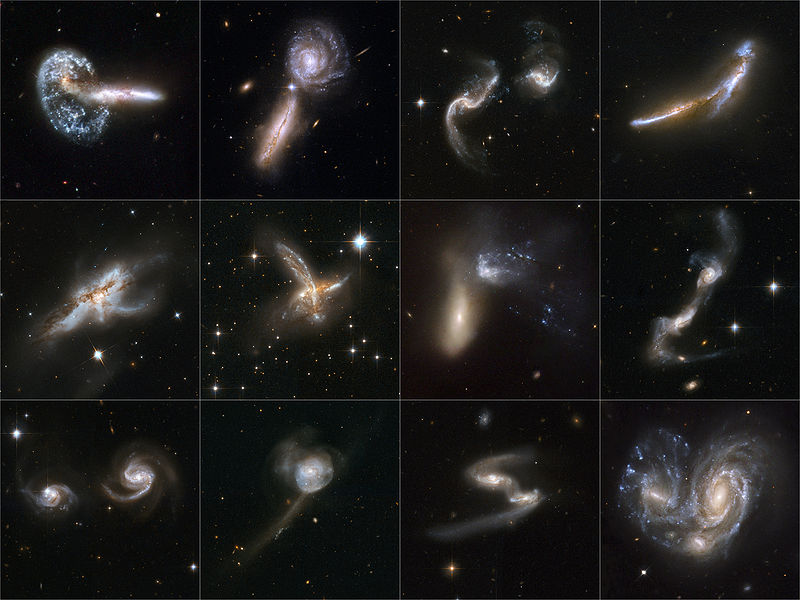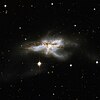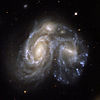Fișier:Galaxies Gone Wild!.jpg

Mărimea acestei previzualizări: 800 × 600 pixeli. Alte rezoluții: 320 × 240 pixeli | 640 × 480 pixeli | 1.024 × 768 pixeli | 1.280 × 960 pixeli | 2.560 × 1.920 pixeli | 6.000 × 4.500 pixeli.
Mărește rezoluția imaginii (6.000 × 4.500 pixeli, mărime fișier: 17,96 MB, tip MIME: image/jpeg)
Istoricul fișierului
Apăsați pe Data și ora pentru a vedea versiunea trimisă atunci.
| Data și ora | Miniatură | Dimensiuni | Utilizator | Comentariu | |
|---|---|---|---|---|---|
| actuală | 24 aprilie 2008 22:38 |  | 6.000x4.500 (17,96 MB) | とある白い猫 | {{Information |Description=Astronomy textbooks typically present galaxies as staid, solitary, and majestic island worlds of glittering stars. But galaxies have a wild side. They have flirtatious close encounters that sometimes end in grand mergers and ov |
Utilizarea fișierului
Următoarele pagini conțin această imagine:
Utilizarea globală a fișierului
Următoarele alte proiecte wiki folosesc acest fișier:
- Utilizare la ar.wikipedia.org
- Utilizare la az.wikipedia.org
- Utilizare la ba.wikipedia.org
- Utilizare la bg.wikipedia.org
- Utilizare la bn.wikipedia.org
- Utilizare la crh.wikipedia.org
- Utilizare la cv.wikipedia.org
- Utilizare la de.wikipedia.org
- Utilizare la en.wikipedia.org
- Utilizare la en.wikiversity.org
- Utilizare la es.wikipedia.org
- Utilizare la fa.wikipedia.org
- Utilizare la fr.wikipedia.org
- Utilizare la hu.wikipedia.org
- Utilizare la it.wikipedia.org
- Utilizare la ja.wikipedia.org
- Utilizare la kk.wikipedia.org
- Utilizare la ko.wikipedia.org
- Utilizare la lbe.wikipedia.org
- Utilizare la mg.wikipedia.org
- Utilizare la my.wikipedia.org
- Utilizare la nl.wikibooks.org
- Utilizare la os.wikipedia.org
- Utilizare la pl.wikipedia.org
- Utilizare la pt.wikipedia.org
- Utilizare la ru.wikipedia.org
Vizualizați utilizările globale ale acestui fișier.













